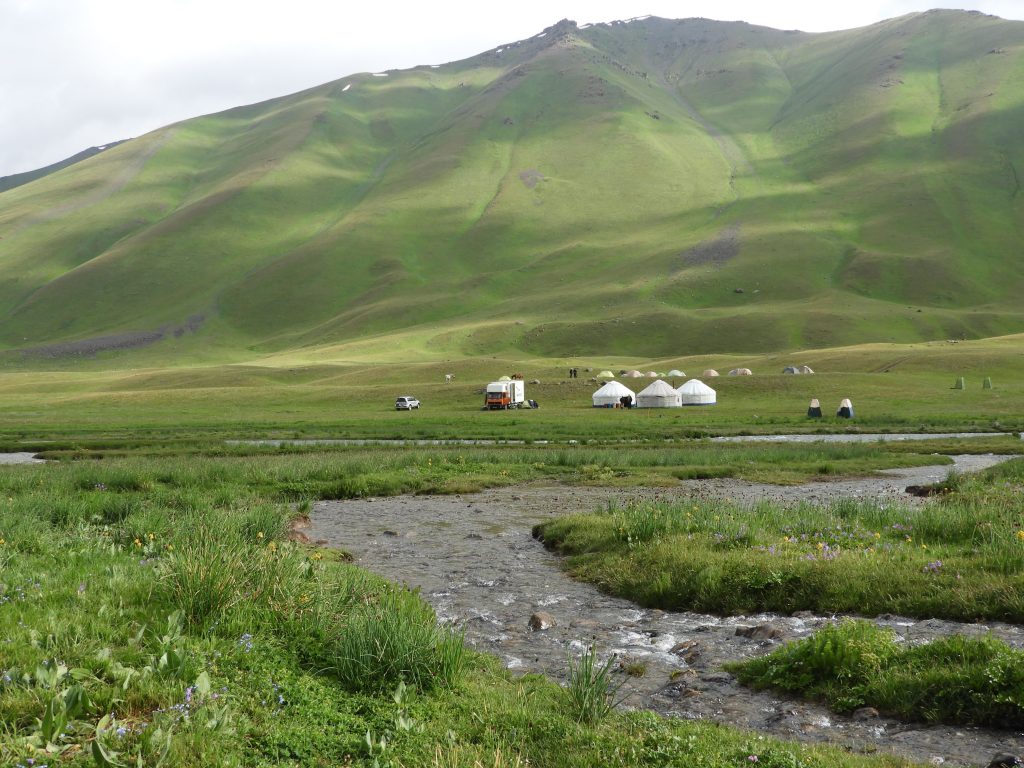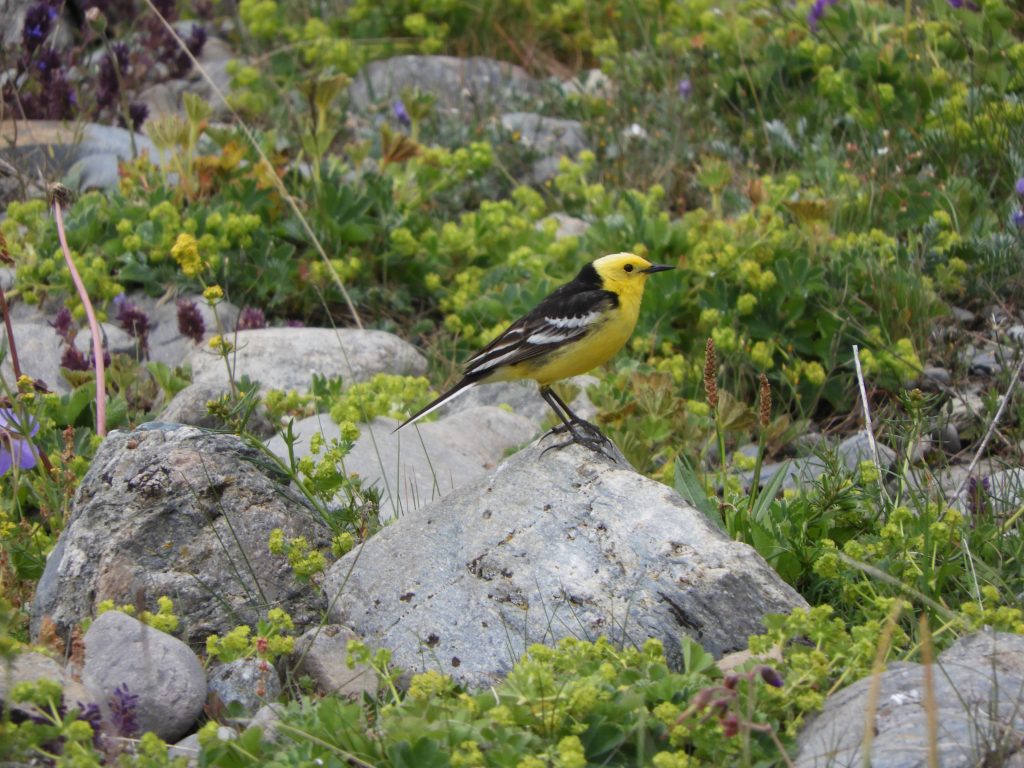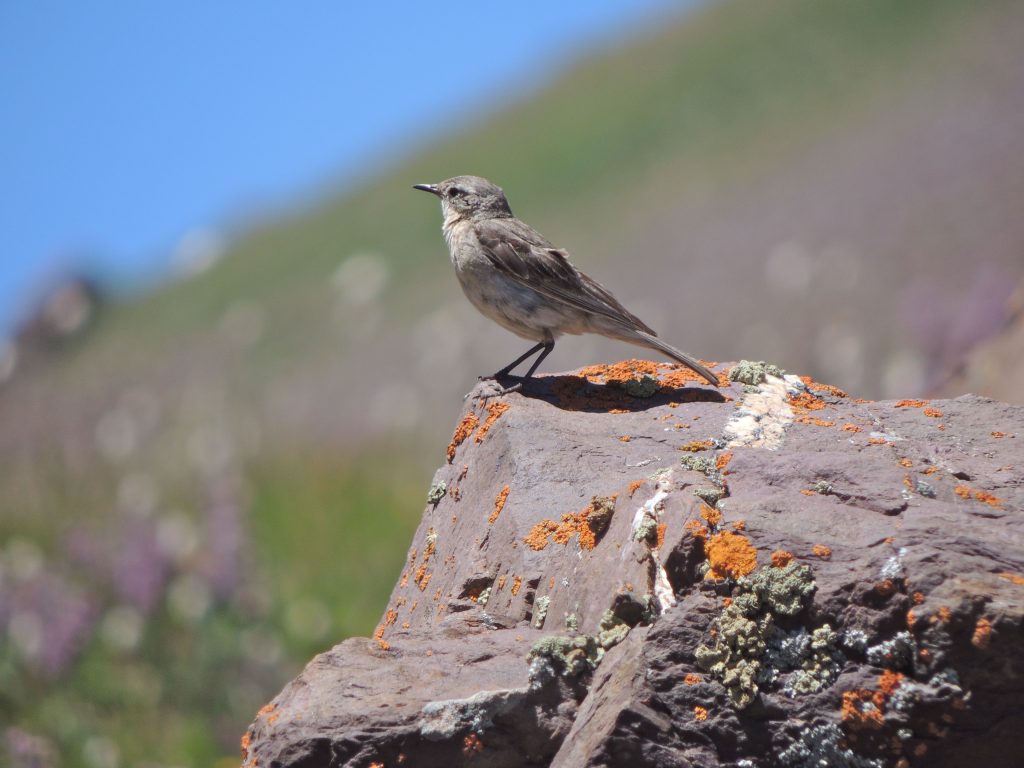July 9 2018. Tien Shan Mountains, Kyrgyzstan. To set the scene, this was the first day of our expedition into a remote corner of the Tien Shan Mountains to look for evidence of Snow Leopards. We were twelve plus our scientist, local guides, and staff, seventeen in all. Our base camp of three yurts and a village of two-man tents (one each) was at the end of a nine hour drive across and through a snow-capped mountain range into West Karakuul Valley a wide expanse that lies metres deep in snow for half the year. The backdrop to our days, this miles-wide glaciated hollow, now knee-deep green with lush pasture, thick with brilliant flowers (including many species of wild onions) and peopled by nomad herdsmen and their families. From every tributary valley ice-cold meltwater poured out of springs or tumbled from the toes of glaciers becoming rivulets, streams and cascades interlaced and gathering into the fast tumbling river in the main valley floor.

Citrine Wagtail were always exotics to me, as birds of China and Central Asia they were always impossibly out of my reach and only ever seen in photos and field guides. But here I was, suddenly now in Central Asia of all places, and on our first day, our day of the long drive in, I saw my Citrine Wagtail, a long-nurtured ambition come to life.

This, my first, Citrine Wagtail came as we made our slow, grinding way to our base camp. It had been an eight-hour journey that had started in congested Bishkek, had climbed a zigzagging truck route to a high mountain pass and eventually made its way down to the West Karakuul Valley. Now the road, such as it was, was bone-rattling, little more than a herders track at times and there was another hour to go.
Perhaps not surprisingly one of our work-horse Toyota Land Cruisers blew out a tire. While an energetic crew worked at changing wheels a glimpse of bright yellow drew me to the icy river nearby: it was an adult male Citrine Wagtail. It soon became obvious that they were the commonest bird in the lower levels of the valleys around us, anywhere you might describe as a wet meadow. It was Bird of the Day without question and despite seeing dozens over the next two weeks, adults and fledglings, they are wagtails and their tails do just that, wag up and down. It was hard not to be charmed by them every time.

A birding page turner! Can’t wait for the next instalment.
What a wonderful adventure- I hope you saw many new things (and evidence of snow leopards). The wagtail was striking.